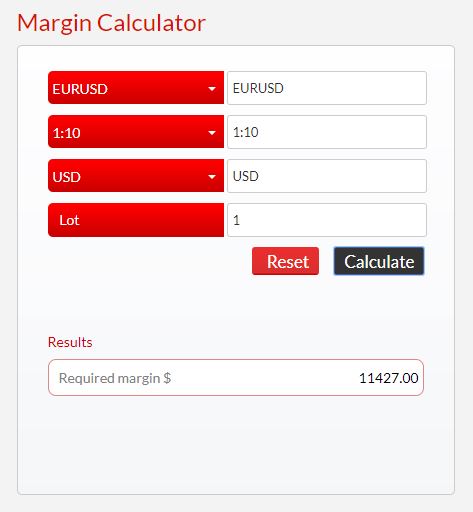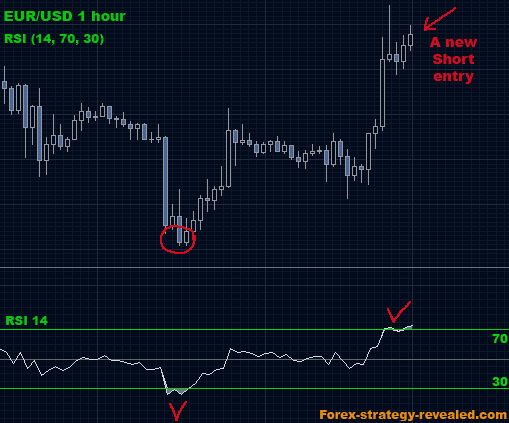
If you're an investor, it might be useful to learn how to check if someone is a stockholder. This information can be very useful in making informed decisions regarding your investment. Learn about how to buy and sell stocks.
Stock Ownership Search
Usually, if you purchase stock from a corporation, they will send you a physical document that contains the number and details of the shares you own. It is a good idea to keep these certificates because they are valuable documents that you should not lose.
How to Prove Your Stock Ownership
The easiest and most reliable way to prove stock ownership is by comparing the paperwork signed when the stock was purchased with the records you keep. For many, this can be a difficult task. However, it is important to protect your financial interest.

Try using the company's website to verify if your information matches. If it does, you can use this to establish that you own the stock and have the right to vote on corporate matters.
A company can print physical copies of your certificate for you. These companies have blanks or templates that you can use. They will also handle all the legal requirements on your behalf, saving you both time and energy.
How to Find a Transfer Agent for Stocks
Stock ownership certificates are important as they prove that you actually own the stocks you have bought. The certificate is useful to collect any dividends owed to you. If you lost the certificate it is vital that it be replaced as quickly as possible.
The transfer agents for stocks are responsible for tracking all of the records and transfers of stockholders, making sure they get their dividends. It is important to choose a transfer agent that is registered with the SEC and has a strong reputation. Ask them also about their experience.

In order to get a complete picture of a company's stockholders, you need to know who owns it currently and historically. You will be able to gain a better understanding of the stock market as well as the overall health and performance of a business.
BamSec has a search tool that allows current stockholders to view the list of holders. The tool also allows you to filter by concentration (top 10), location, type of investors and date range.
If you are looking for a list of historic owners, the same tool offers a similar feature called "Shareholder History Report." The report includes a list that shows all of the current holders as well historical holdings dating back to 1997.
FAQ
What is a Stock Exchange and How Does It Work?
A stock exchange allows companies to sell shares of the company. This allows investors the opportunity to invest in the company. The market decides the share price. The market usually determines the price of the share based on what people will pay for it.
The stock exchange also helps companies raise money from investors. To help companies grow, investors invest money. This is done by purchasing shares in the company. Companies use their money as capital to expand and fund their businesses.
Many types of shares can be listed on a stock exchange. Some of these shares are called ordinary shares. These shares are the most widely traded. These are the most common type of shares. They can be purchased and sold on an open market. Stocks can be traded at prices that are determined according to supply and demand.
Other types of shares include preferred shares and debt securities. When dividends are paid out, preferred shares have priority above other shares. The bonds issued by the company are called debt securities and must be repaid.
What is a REIT?
A real estate investment Trust (REIT), or real estate trust, is an entity which owns income-producing property such as office buildings, shopping centres, offices buildings, hotels and industrial parks. They are publicly traded companies that pay dividends to shareholders instead of paying corporate taxes.
They are similar in nature to corporations except that they do not own any goods but property.
How can I invest in stock market?
Through brokers, you can purchase or sell securities. Brokers can buy or sell securities on your behalf. You pay brokerage commissions when you trade securities.
Banks charge lower fees for brokers than they do for banks. Banks will often offer higher rates, as they don’t make money selling securities.
If you want to invest in stocks, you must open an account with a bank or broker.
If you are using a broker to help you buy and sell securities, he will give you an estimate of how much it would cost. This fee is based upon the size of each transaction.
Ask your broker questions about:
-
the minimum amount that you must deposit to start trading
-
If you close your position prior to expiration, are there additional charges?
-
What happens if your loss exceeds $5,000 in one day?
-
How many days can you maintain positions without paying taxes
-
How much you are allowed to borrow against your portfolio
-
Transfer funds between accounts
-
how long it takes to settle transactions
-
The best way buy or sell securities
-
How to Avoid Fraud
-
How to get help when you need it
-
If you are able to stop trading at any moment
-
What trades must you report to the government
-
If you have to file reports with SEC
-
Do you have to keep records about your transactions?
-
If you need to register with SEC
-
What is registration?
-
How does it affect me?
-
Who should be registered?
-
What time do I need register?
What role does the Securities and Exchange Commission play?
SEC regulates the securities exchanges and broker-dealers as well as investment companies involved in the distribution securities. It enforces federal securities laws.
Are bonds tradable?
Yes, they are. You can trade bonds on exchanges like shares. They have been trading on exchanges for years.
You cannot purchase a bond directly through an issuer. A broker must buy them for you.
Because there are fewer intermediaries involved, it makes buying bonds much simpler. This also means that if you want to sell a bond, you must find someone willing to buy it from you.
There are many different types of bonds. While some bonds pay interest at regular intervals, others do not.
Some pay interest every quarter, while some pay it annually. These differences make it possible to compare bonds.
Bonds can be very useful for investing your money. You would get 0.75% interest annually if you invested PS10,000 in savings. If you invested this same amount in a 10-year government bond, you would receive 12.5% interest per year.
If all of these investments were accumulated into a portfolio then the total return over ten year would be higher with the bond investment.
Statistics
- Even if you find talent for trading stocks, allocating more than 10% of your portfolio to an individual stock can expose your savings to too much volatility. (nerdwallet.com)
- Individuals with very limited financial experience are either terrified by horror stories of average investors losing 50% of their portfolio value or are beguiled by "hot tips" that bear the promise of huge rewards but seldom pay off. (investopedia.com)
- Our focus on Main Street investors reflects the fact that American households own $38 trillion worth of equities, more than 59 percent of the U.S. equity market either directly or indirectly through mutual funds, retirement accounts, and other investments. (sec.gov)
- For instance, an individual or entity that owns 100,000 shares of a company with one million outstanding shares would have a 10% ownership stake. (investopedia.com)
External Links
How To
How to open and manage a trading account
The first step is to open a brokerage account. There are many brokers available, each offering different services. There are many brokers that charge fees and others that don't. Etrade (TD Ameritrade), Fidelity Schwab, Scottrade and Interactive Brokers are the most popular brokerages.
Once your account has been opened, you will need to choose which type of account to open. These are the options you should choose:
-
Individual Retirement accounts (IRAs)
-
Roth Individual Retirement Accounts
-
401(k)s
-
403(b)s
-
SIMPLE IRAs
-
SEP IRAs
-
SIMPLE 401 (k)s
Each option comes with its own set of benefits. IRA accounts are more complicated than other options, but have more tax benefits. Roth IRAs permit investors to deduct contributions out of their taxable income. However these funds cannot be used for withdrawals. SIMPLE IRAs and SEP IRAs can both be funded using employer matching money. SIMPLE IRAs require very little effort to set up. They allow employees and employers to contribute pretax dollars, as well as receive matching contributions.
The final step is to decide how much money you wish to invest. This is also known as your first deposit. A majority of brokers will offer you a range depending on the return you desire. For example, you may be offered $5,000-$10,000 depending on your desired rate of return. The lower end of the range represents a prudent approach, while those at the top represent a more risky approach.
You must decide what type of account to open. Next, you must decide how much money you wish to invest. There are minimum investment amounts for each broker. These minimums can differ between brokers so it is important to confirm with each one.
After choosing the type account that suits your needs and the amount you are willing to invest, you can choose a broker. Before selecting a brokerage, you need to consider the following.
-
Fees - Be sure to understand and be reasonable with the fees. Many brokers will try to hide fees by offering free trades or rebates. However, many brokers increase their fees after your first trade. Do not fall for any broker who promises extra fees.
-
Customer service – Look for customer service representatives that are knowledgeable about the products they sell and can answer your questions quickly.
-
Security - Look for a broker who offers security features like multi-signature technology or two-factor authentication.
-
Mobile apps - Make sure you check if your broker has mobile apps that allow you to access your portfolio from anywhere with your smartphone.
-
Social media presence: Find out if the broker has a social media presence. If they don’t, it may be time to move.
-
Technology – Does the broker use cutting edge technology? Is it easy to use the trading platform? Are there any issues when using the platform?
Once you have selected a broker to work with, you need an account. Some brokers offer free trials, while others charge a small fee to get started. After signing up, you will need to confirm email address, phone number and password. Next, you'll have to give personal information such your name, date and social security numbers. Finally, you will need to prove that you are who you say they are.
After your verification, you will receive emails from the new brokerage firm. These emails contain important information and you should read them carefully. For instance, you'll learn which assets you can buy and sell, the types of transactions available, and the fees associated. Keep track of any promotions your broker offers. These could include referral bonuses, contests, or even free trades!
Next is opening an online account. An online account is typically opened via a third-party site like TradeStation and Interactive Brokers. These websites can be a great resource for beginners. When you open an account, you will usually need to provide your full address, telephone number, email address, as well as other information. After all this information is submitted, an activation code will be sent to you. This code will allow you to log in to your account and complete the process.
Now that you've opened an account, you can start investing!